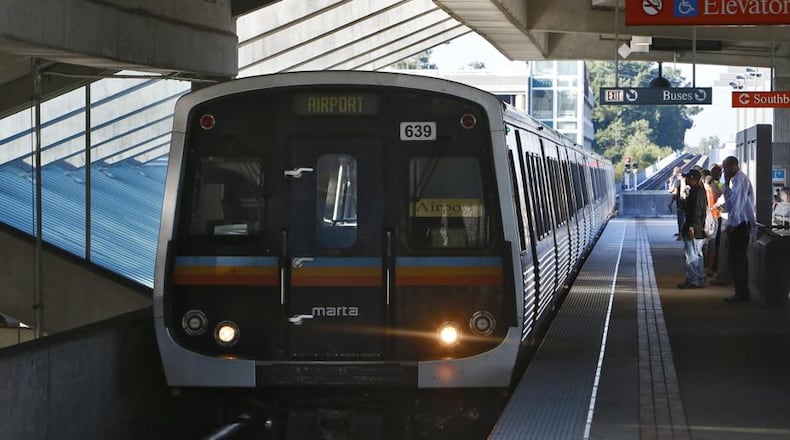Efforts to create a metro Atlanta transit plan took a step forward Wednesday when a regional board approved a method for selecting projects for funding.
The Atlanta-Region Transit Link Authority would use 14 criteria — such as population projections in the proposed transit corridor and the availability of local funding — to help determine which projects are first in line for crucial federal and state funding. It's an attempt to bring a measure of objectivity to a selection process that likely will remain politically sensitive.
That sensitivity was on display Thursday when members of the authority — dubbed the ATL Board for short — discussed the process. DeKalb County CEO Michael Thurmond, a Democrat, said he wanted the criteria to clearly reflect the board’s commitment to equity — ensuring all communities receive their fair share, especially low-income or other disadvantaged communities.
“One of the major challenges we face is lack of income mobility — intractable poverty and high unemployment,” Thurmond said.
Former state Rep. Earl Ehrhart, a Cobb County Republican, felt just as strongly that projects should demonstrate a strong return on investment.
“We won’t continue to get voter support, state support or anyone’s support” if that’s not a key factor, Earhart said.
The discussion may have been a preview of debates to come as the ATL Board decides which projects get first shot at funding.
The General Assembly created the board last year as part of legislation that could clear the way for transit expansion across metro Atlanta. The board's chief responsibility is to create a regional transit plan from a slew of local project wish lists. As a first step, the board approved a selection process — including objective criteria — to guide its decisions.
The criteria include a variety of measures of projects’ market potential, impact and deliverability.
The impact of projects would be assessed by measuring the number of transit trips it would produce and the reliability of the proposed service, among other factors. Market potential would be judged by criteria such as employment density and development potential along the transit corridor. Deliverability criteria include available financing and documented support for the project.
The criteria would be weighted differently for different kinds of projects — such as new service versus enhancements to existing service. Each project would be scored, with higher-scoring projects potentially becoming a higher priority for funding.
But the board would make the final decisions on how projects are ranked, taking into account core principles such as equity, return on investment and environmental sustainability. That’s where the decision-making could get sticky.
Chris Tomlinson, the board’s interim executive director, said decisions often won’t be difficult because most major projects won’t come up for funding at the same time. He said most will be on different timetables because they must navigate environmental reviews and clear other obstacles before they can qualify for federal and state funding.
When there is direct competition for funding, Tomlinson said the objective process will help the board decide which project to support.
The ATL Board approved the selection process without dissent.
The board expects to seek lists of potential projects from local transit agencies this summer. It hopes to adopt a final transit plan by the end of the year.
About the Author
Keep Reading
The Latest
Featured




